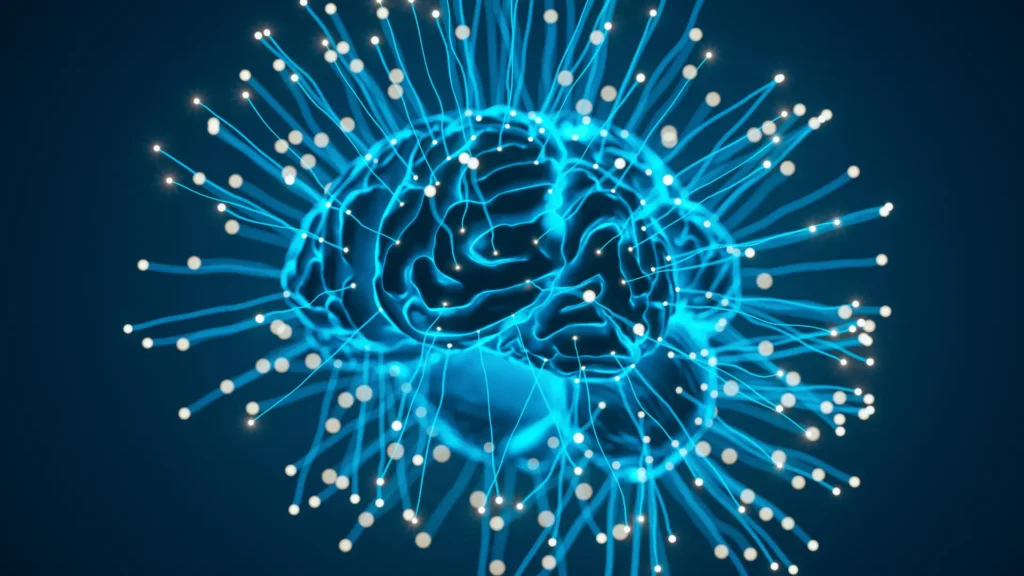Neuro-Linguistic Programming (NLP) is a methodology for understanding and changing human behavior and subjective experience. It operates as a pragmatic model that deconstructs the communication and thought patterns of exceptional individuals to create replicable techniques for personal development. Its focus is on the structure of how people think, communicate, and behave, rather than on the content of their problems.
Defining Neuro-Linguistic Programming
The name “Neuro-Linguistic Programming” is a literal description of the three fundamental components that it models to create change.
The “Neuro” Component
This aspect pertains to the nervous system and the neurological pathways through which we process information from the outside world (the sense of exteroception). All our experiences, conscious or unconscious, are derived from and filtered through our five sensory systems: visual, auditory, kinesthetic, olfactory, gustatory, and others (yes, we have more than just five senses). NLP closely examines how individuals favor certain sensory systems—their “representational systems”—and how this internal processing dictates their mental maps of reality. To change an outcome, one must first understand and then alter the neurological processes that create and maintain the current state.
The “Linguistic” Component
The “Linguistic” element refers to the way we use language and other non-verbal communication systems to make sense of the world and convey our mental maps to others and ourselves. NLP posits that our choice of words, syntax, and tonality is not random but is a direct reflection of our deeper cognitive processes. Main NLP models, like the Meta-Model and the Milton Model, are specific linguistic toolkits. The Meta-Model uses precise questioning to challenge and clarify linguistic distortions that limit a person’s choices, while the Milton Model uses artfully vague language to communicate with the unconscious mind and increase receptivity to change.
The “Programming” Component
“Programming” refers to the learned and often unconscious patterns of thought and behavior that people run in their daily lives to achieve outcomes. These “programs” or internal strategies are like mental software. For instance, a person has a specific internal strategy for motivation, for making decisions, and for feeling fear. By identifying the sequence of internal representations (pictures, sounds, feelings) that make up a problematic strategy, an NLP practitioner can help a client interrupt that pattern and install a more effective one, essentially “reprogramming” their response to a given stimulus.
NLP Coaching
NLP Coaching is a distinctly forward-focused and goal-oriented application of Neuro-Linguistic Programming. Unlike conventional therapy that may dive into the etiology of a client’s past issues, an NLP coach is concerned primarily with defining a client’s desired future state and systematically eliminating the internal obstacles preventing its achievement. The process is pragmatic and solution-focused. A coach and client collaborate to make explicit goals, then the coach utilizes NLP techniques to uncover and alter the client’s limiting beliefs, install resourceful states through anchoring, or reframe problems into opportunities. The framework is built on the presupposition that the client already has the necessary internal resources to succeed; the coach’s role is simply to provide the tools to access and organize them effectively.
NLP and Hypnosis
The connection between NLP and hypnosis is foundational, not incidental; NLP (partially) grew out of an analysis of hypnotherapy.
Shared Origins with Hypnotherapy
NLP was born in the 1970s when its co-creators, Richard Bandler and John Grinder, undertook a project to model human excellence. One of their primary subjects was Milton H. Erickson, M.D., a psychiatrist renowned for his revolutionary approach to hypnotherapy. They deconstructed Erickson’s seemingly intuitive use of indirect suggestion, metaphor, and rapport to create a formal, learnable model of hypnotic communication—what is now known in NLP as the “Milton Model.” Therefore, a significant portion of NLP’s linguistic toolkit is, in fact, a codification of Ericksonian hypnosis.
Integration in Practice
In modern practice, NLP and hypnosis are often used in tandem to produce rapid and lasting change. A practitioner might use NLP’s sensory acuity and rapport techniques to build a strong connection with a client before seamlessly transitioning into a formal hypnotic induction. Conversely, a hypnotherapist might use NLP’s “strategy elicitation” to identify a client’s specific thought process for creating anxiety and then use a hypnotic trance to install a new, calmer strategy at the unconscious level. Because both disciplines operate on the principle of communicating directly with the unconscious mind to leverage its resources, they are not just compatible but synergistic.
Popular NLP Techniques
NLP is fundamentally a practical discipline, defined by its set of techniques for changing thought and behavior.
Anchoring
Anchoring is the process of creating a neurological link between a specific stimulus and a potent emotional or psychological state. This stimulus-response conditioning allows a person to access a resourceful state on command. The process involves first fully eliciting a desired state (e.g., profound confidence). At the peak of this experience, a unique anchor—such as pressing the thumb and forefinger together—is applied. After repetition, the neurological connection is solidified, allowing the individual to “fire” the anchor later to instantly re-access that state of confidence when needed, such as before a presentation or a difficult conversation.
Reframing
Reframing is a cognitive technique that alters the meaning of an experience, thereby changing a person’s emotional and behavioral response to it. This is based on the NLP presupposition that every behavior has a positive intention in some context. A context reframe involves taking a perceived negative behavior and identifying a context in which it would be useful (e.g., the “stubbornness” that is a problem in a team meeting is a valuable resource for persevering on a difficult solo project). A content reframe changes the meaning of the situation itself (e.g., a “failed” business venture is reframed as an “expensive but valuable learning experience”). By shifting the frame, the problem itself can be transformed into a resource.
Summary
Neuro-Linguistic Programming is a model for understanding the structure of subjective experience and a powerful set of tools for changing it. At primexaos, I use these exact NLP and NLP-like techniques when coaching my clients, providing them with practical methods to reframe their thinking, manage their mental states, and build more effective strategies to achieve their personal and professional goals.



